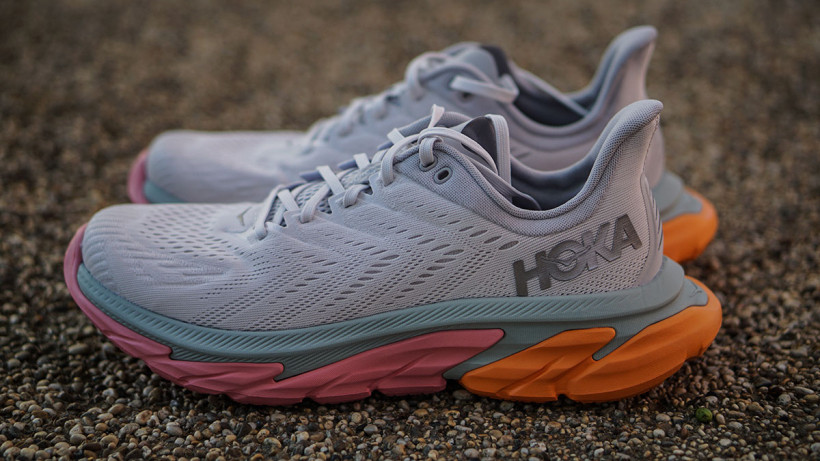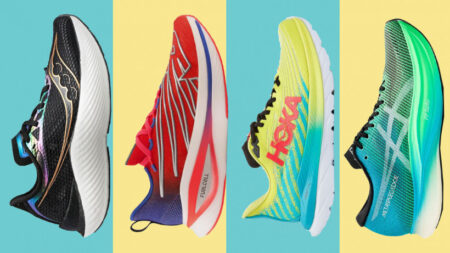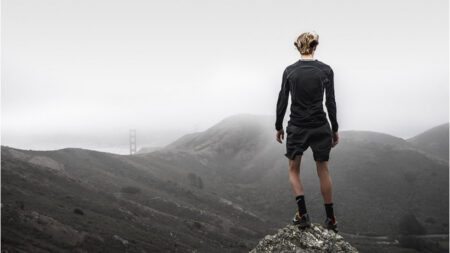Clever science or Achilles heel?
The world of running shoes has seen its fair share of creativity over the last couple years, with the resultant products varying wildly between leaps forward in technology and design, and marketing nonsense that’s best left as a distant memory. At first glance, Hoka’s latest shoe, the Clifton Edge could be either.
Hoka One One recently made headlines with the release of its TenNine trail shoe, a design that looks more like a cartoon than a serious piece of kit for the outdoors. It was, however, a shoe with a purpose, specifically for those runners that take on severe downhills. It may not be a shoe designed for general runners but those that have used it for its niche purpose have been more than impressed with the results.
- Upgrade your footwear: The best road running shoes to buy for men | The best road running shoes for women
The Clifton Edge takes learnings from the TenNine, applying that extended heel section to the average road runner. It’s not just for downhills either, positioned as a lightweight cushioned shoe that anyone can wear. Although it has obvious benefits for heel strikers.
We’ve spent the past few weeks putting the Clifton Edge through its paces to see if that bold new design is worth investing in.
The specs
Price: £140 | Weight: 253g/ 8.9oz (men) 206g/ 7.03oz (women) | Type: Road/Training | Stability: Neutral | Heel to toe drop: 5mm | Sizing: Fits small | Alternatives: Hoka One One Clifton, Brooks Glycerin 17, Saucony Triumph 17
Design
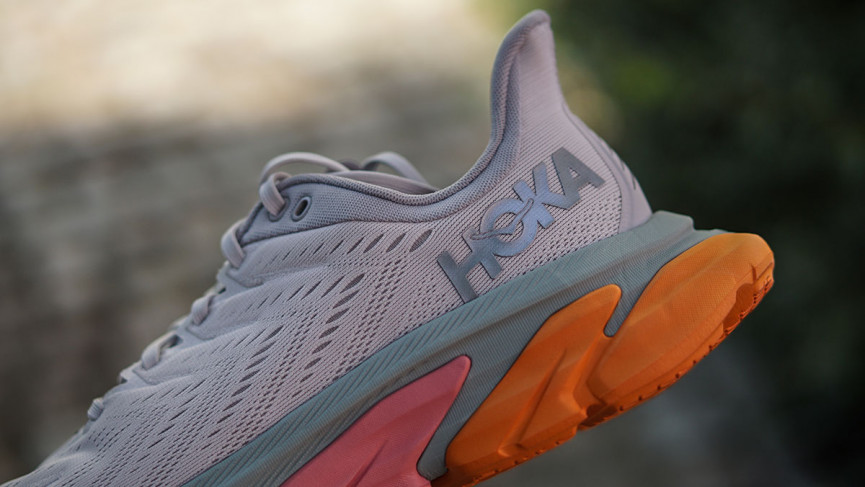
Although the Edge falls under the Clifton range umbrella it is, for the most part, a very different shoe. Obviously, the addition of the extended heel makes for a noticeable departure from the more conventional Clifton design, but it’s far from a slightly modified version.
When you first get your hands on the Edge there’s no denying it’s a big piece of footwear. Placed next to another shoe of the same size it looks significantly larger – to the point where we were worried we may have the wrong size. That’s entirely due to the additional midsole though and, in fact, the Clifton Edge sizes slightly small.
Surprisingly that chunky design doesn’t translate to a heavy shoe and the Edge comes in lighter than the majority of the Clifton range. That’s in no small part due to the addition of a new lightweight midsole foam that runs the length of the shoe, which works alongside the rubberized foam on the outsole.
Although the logical assumption would be that the shoe is designed to minimize impact for heel strikers, Hoka says that this isn’t the case (although it’s likely that severe heel strikers will see a benefit). The wide base not only lessens impact, but also means the foot lands in a stable way, allowing all runners to start each step in a better position that rolls forward in a smooth motion, minimising pronation after landing.
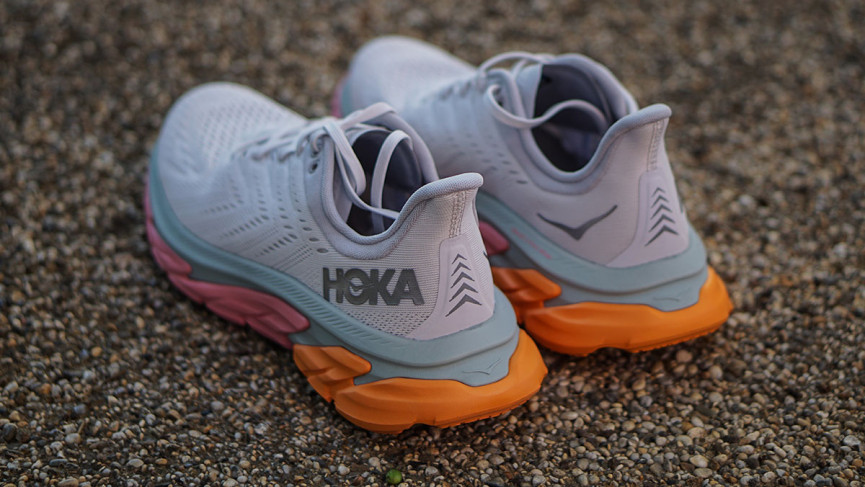
The upper, although breathable, is designed with a relatively thick mesh material with additional reinforcement around the heel and toe areas. It’s a secure fit that helps keep the foot tightly in place as you run. There’s also a lengthened heel collar to help get the shoes on and off.
Although the outsole foam is rubberized to aid durability, there’s no actual rubber covering the outsole of the shoe. There’s also a very subtle rocker design.
Road testing
When you first start wearing the Clifton Edge there’s an instant feeling that you’re wearing a lot of shoe on your feet. When taking it out for the first time we expected it to feel like running on a sponge but after a few kilometres it becomes clear that the additional rubber has little to no adverse effects.
The only time you do notice it is, understandably, when you hit a downhill or step onto an uneven surface. We found ourselves trying to find stepper downhills to really see how it handles them, and when we did, it was a nice experience.
There wouldn’t be much point in a road shoe if it only delivered a nice experience for a small portion of a run and luckily Hoka has designed a much more versatile shoe. On flat roads, the Edge offers an extremely comfortable and responsive ride. The experience of the rocker is limited and we didn’t feel like it was helping to propel us forward, but for slower training runs it’s a joy to run in.
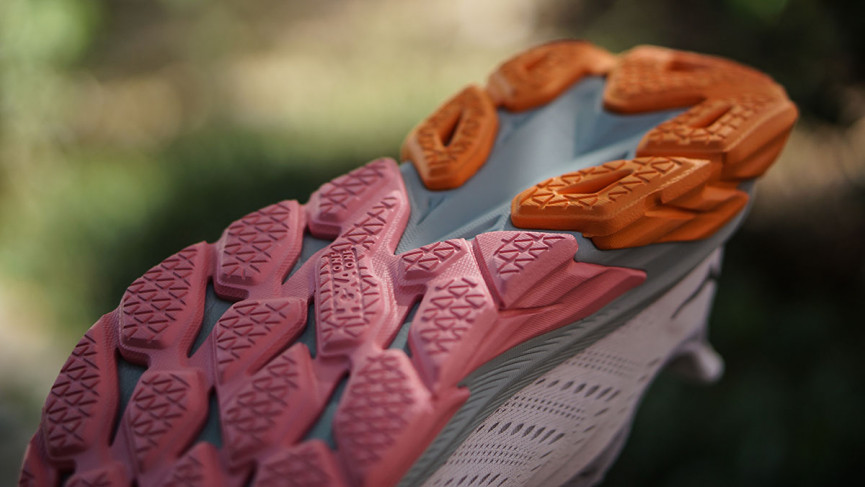
At faster speeds, the Edge is by no means bad and the lightweight design delivers if you need it to, but it’s definitely not designed for racing. It is, however, a great option if you want comfort over short to long distances. If you’re a long distance runner that’s focussed on miles instead of time, it’s well worth a look.
The only downside we found was that the lack of rubber covering the outsole did start to wear down after a couple of runs; an unsurprising trade off when it comes to making a chunky shoe that’s relatively lightweight.
Summary
It’s quite hard to verify the positives of the extended heel on the Clifton Edge. For us, there seemed to be very little in terms of noticeable benefits save for the occasional downhill we found, however, if you’re a severe heel striker that may not be the case. It’s certainly not a negative aspect of the shoe and the fact that it still offers a comfortable and lightweight ride despite looking larger than any other shoe we own is a testament to the new materials used in the midsole and outsole.
That said, there’s a definite feel of support in that heel section which each foot strike. So if you’re looking for a shoe to help position your foot correctly as you run, maybe if you struggle with foot positioning, it could offer a welcome level of support.
For those runners that have no need for additional support, or indeed midfoot or forefoot strikers, there are no negative implications of that heel section.
At £140 it’s not a cheap option, and if you’re purely looking for something with extra cushioning then the design may be an unnecessary expenditure.


